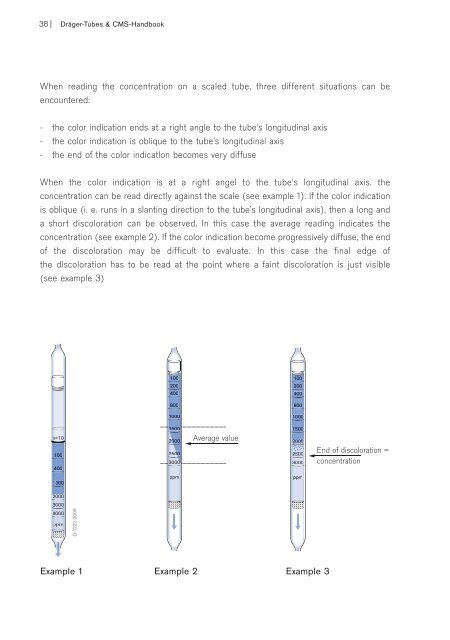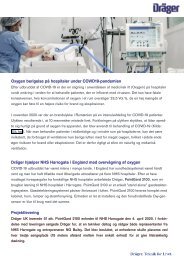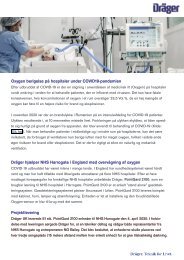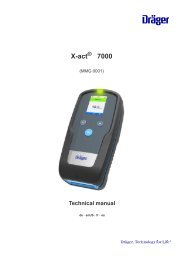Create successful ePaper yourself
Turn your PDF publications into a flip-book with our unique Google optimized e-Paper software.
38| Dräger-<strong>Tubes</strong> & CMS-<strong>Handbook</strong><br />
When reading the concentration on a scaled tube, three different situations can be<br />
encountered:<br />
- the color indication ends at a right angle to the tube's longitudinal axis<br />
- the color indication is oblique to the tube's longitudinal axis<br />
- the end of the color indicatlon becomes very diffuse<br />
When the color indication is at a right angel to the tube's longitudinal axis. the<br />
concentration can be read directly against the scale (see example 1). If the color indication<br />
is oblique (i. e. runs in a slanting direction to the tube’s longitudinal axis), then a long and<br />
a short discoloration can be observed. In this case the average reading indicates the<br />
concentration (see example 2). If the color indication become progressively diffuse, the end<br />
of the discoloration may be difficult to evaluate. In this case the final edge of<br />
the discoloration has to be read at the point where a faint discoloration is just visible<br />
(see example 3)<br />
100<br />
200<br />
400<br />
100<br />
200<br />
400<br />
800<br />
800<br />
1000<br />
1000<br />
n=10<br />
100<br />
400<br />
1000<br />
1500<br />
2000<br />
2500<br />
3000<br />
ppm<br />
Average value<br />
1500<br />
2000<br />
2500<br />
3000<br />
ppm<br />
End of discoloration =<br />
concentration<br />
2000<br />
3000<br />
4000<br />
D-1222-2009<br />
Example 1<br />
Example 2<br />
Example 3


















